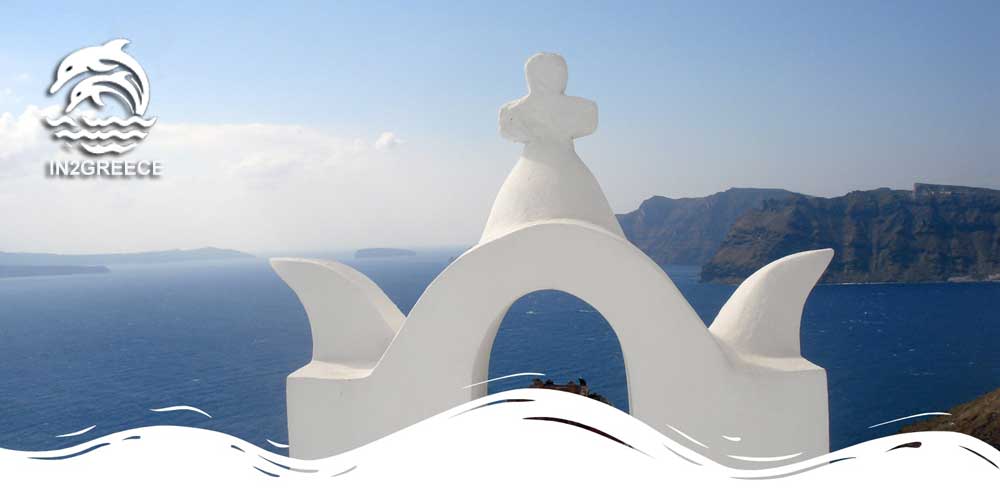Sights and attractions of Skiathos
The Castle of Skiathos
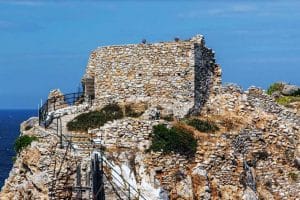
From there you will walk about 30 minutes down to the old town of Kastro. Of course, the best way to approach it is by boat from the old port of Skiathos, to enjoy the route as well as the view.
Around 1360, due to constant pirate raids, the Skiathians were forced to leave the ancient city of Skiathos and establish their town in the Castle with an area of about 25 acres. It is a rocky peninsula in the northern part of the island, a natural fortress that literally hangs over the sea, as it is built on an imposing rock with a panoramic view.
For this reason, on all three sides towards the sea, it is surrounded by a weaker wall, while at the point where it joins the land, stronger towering walls were built, scattered with battlements and cannons. The fortress was connected to the land by a wooden drawbridge, which connected the fortress gate with the hill opposite. Above the gate was a terrace with battlements and the scalding chamber.
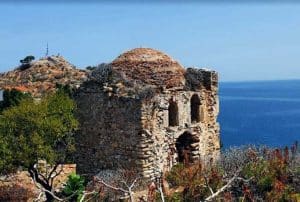
All these years the life of its inhabitants was very difficult and sometimes even martyrdom, since in addition to the constant raids of pirates and would-be conquerors, they also faced the problem of lack of space inside the fortress as the houses were small and built in very close to each other and apart from the many churches, there were no other buildings or spaces for the population.
In the Castle there were 400-500 houses, 4 parishes and more than twenty small churches, as well as a mosque without a minaret and a command post from the years of the Turkish occupation, as well as the necessary tanks for water, while the Cemetery was outside the castle. After the liberation of the island from the Turks, the castle came into Greek hands and after the declaration of the Independent Greek State, in 1830, the castle was abandoned and slowly fell into disrepair.
The approximately 1500 inhabitants moved to where the town of Skiathos is today and rebuilt it using materials from the Castle: they not only took their household but also whatever building materials they could reuse, such as frames, windows, doors, roofs, timber.
Thus the Castle was not only suddenly deserted but also suffered great destruction. From the moment the Castle was abandoned in 1830, with the establishment of the Independent Greek State, it was left to its own devices.
Now, ruins of houses, two parish churches (Christ and Agios Nikolaos), two churches (Agios Vasilios and Agia Marina) are preserved, a part of the walls with the gate, the zematistra, the dilapidated mosque and some ruins of the Turkish Administration as well , also 2 water tanks and the “Necessity” cannon.
The Castle combines the wild majestic natural beauty with the story told by the ruined remains. From up here, between heaven and earth, the view is magnificent.
Folklore Museum of the Monastery of Evangelistria
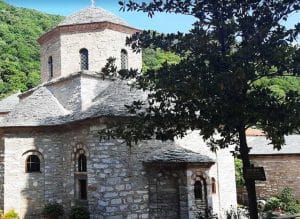
In the monastery’s katholikon, the Holy Relics of many Saints are kept, many of which were donated by Admiral Lazaros Kountouriotis in 1823 in recognition of the great contribution of the Monastery to the liberation of the nation.
A great collection of folklore objects as well as historical relics adorns the Museum of the Monastery as well as many objects used by our heroic ancestors, such as the collection of the late Markos Botsaris as well as many Skiathians who gave them to the Monastery to ensure their salvation.
Skiathos House
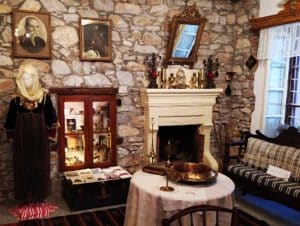
The interior of the house is of great interest, as many pieces of furniture and objects belonging to the same family from the late 19th century have survived.
Some ancestors of the family in the “Scythian House” had immigrated at the beginning of the 20th century to America, specifically to Newport, which is why there are photos as well as gifts and objects that had come from there. All this gives rise to a charming and unique cultural blend.
Bourtzi
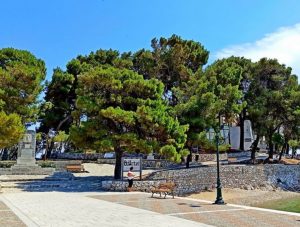
Today, there is nothing except some remnants of the fortress, which was destroyed in 1660 when the Venetian Admiral Francesco Morosini captured the island.
Since 1925, the bust of the writer Alexandros Papadiamantis has been at its entrance.
Bourtzi is a verdant recreation area, full of pine trees, wonderful coolness and a magnificent view, which is visited by both locals and visitors to the island.
Its back side leads to a stone staircase that descends to the sea. There, there are rocks that, if you choose to sit on them, the image in any direction is enchanting and gives you the possibility to dream and travel in your mind to the short story of Alexandros Papadiamantis who saw these images when he wrote “Dream in the Wave”.
In addition, the cafe that exists at that point especially during the summer months an abyss of coolness and the view that create an amazing combination that attracts people to visit it, admire it and take wonderful photos.
Museum of Maritime and Cultural Tradition of Skiathos
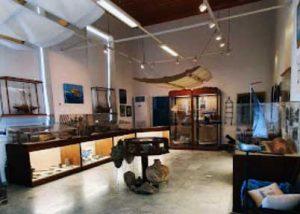
Skiathos, due to its geographical location and its safe harbor, was destined to play an important role in both shipbuilding and maritime tradition.
The occupation of the Skiatians with shipping starts from the depths of the centuries and continues undisturbed until today.
Church of the Three Hierarchs
Metropolis of the island for more than 150 years, with priests such as Adamantios, father of Papadiamantis and others who were always guided by Georgios Rigas, philologist and writer of the island. It is a three-aisled basilica, built in 1846, it is located in the center of the city and houses sacred relics and the icon of Panagia of Kounistra that was found in 1650 and is the patron saint of the island.
